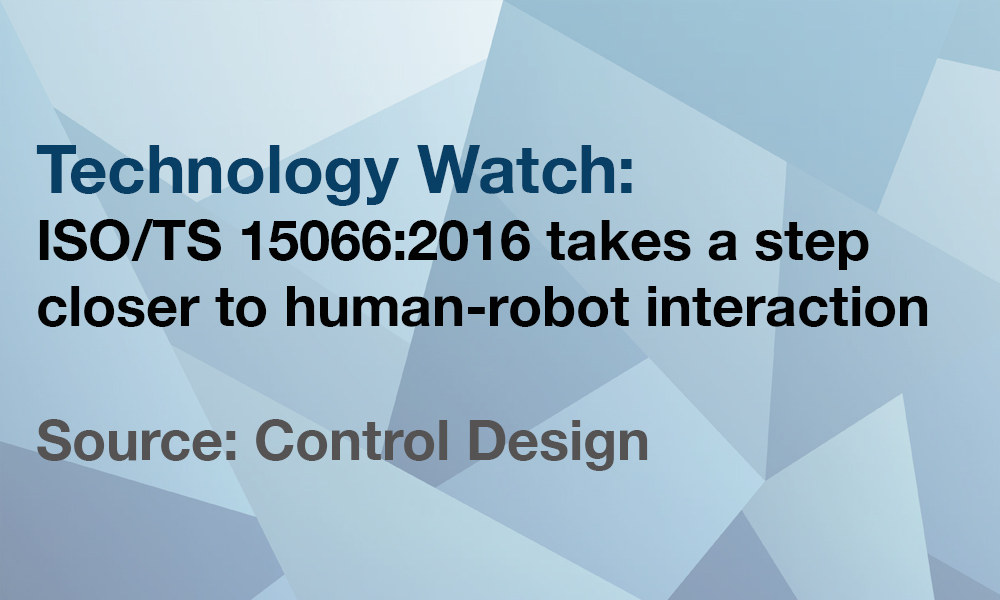Source: Control Design
The ISO/TS 15066 standard provides safety requirements specifically to robot suppliers and integrators on using collaborative industrial robot systems.
The first solid step toward ensuring the safety of human workers in a collaborative robot system is TS 15066, a technical-specification (TS) document that provides supplemental and supporting information to the industrial robot safety standards ISO 10218-1 and ISO 10218-2, which were published in 2011. This technical specification applies to how humans work with or, rather, how closely they work with the collaborative robot system, specifically.
What is a collaborative robot application?
Collaborative robots actually refer to a robot system, rather than a particular type of robot. With a collaborative robot application, humans and robots can occupy the same workspace at the same time while the system is in automatic mode. There are still safeguards and a risk assessment required, in accordance with the robot system safety standard ISO 10218-1 and -2:2011. For now, the collaborative workspace will most likely be a small defined space with familiar fencing or other safeguards surrounding the rest of the robot.
What makes the collaborative robot safe for human interaction?
When implemented according to the guidelines in ISO/TS 15066, the collaborative robot system might utilize one or a combination of the following:
- power and force limiting
- speed and separation monitoring
With power and force limiting, the power and force of the robot’s motion is constrained to levels that have proven to not cause pain to a human, if contact were to occur. ISO/TS 15066 provides data on pain threshold levels allowing us to know where to set those limits on the power and force of the robot’s movement.
With speed and separation monitoring, on the other hand, the robot is made aware of the human presence and takes action to maintain a safe distance, or shut down altogether if the safe distance cannot be maintained. In this scenario, if the human takes a step toward it, the robot might move an equal distance backward, maintaining the safe distance at all times.
What will change with TS 15066?
Traditionally, robot systems and people have been separated with various guards, fences and protective devices. But, thanks to TS 15066, scenarios have been determined where people and robots can work more closely together.
The ISO/TS 15066 standard provides safety requirements specifically to robot suppliers and integrators on using collaborative industrial robot systems. The standard will work as a foundation for the next series of developments within the collaborative robot industry.
What’s important about TS 15066?
TS 15066 combines key information that is both new and previously established into guidance for the design of collaborative robot systems, including important aspects, such as:
- definition of a collaborative robotic system
- important characteristics of the safety-related control system for collaborative operation
- identification of factors to be taken into consideration in the design of a collaborative robot system
- built-in, safety-related systems that can be used effectively in a collaborative operation and requirements for their effective use
- steps in implementing a collaborative application
- guidance on maximum allowable speeds and minimum protective distances, as well as the formula for determining the protective separation distance
- data to help determine threshold limit values for power and force limiting to avoid pain or discomfort on the part of the human operator
How will this impact the industry?
Power and force limiting, as well as speed and separation monitoring, are now being accomplished with existing technologies; however, future technology will most likely result in even more breakthroughs. This will most likely pertain to protective devices with tighter integration, such as when the robot system’s motion is integrated with a protective device that detects intrusion and presence in the shared workspace. This could mean a future consisting of a barrier-free workspace for the human and robot system.
A hard copy of ISO/TS 15066 can be purchased from the RIA Online Store.
Author: Bob Doyle

